A Study on Export and Imports of Pearls in India - Foreign Trade
VerifiedAdded on 2022/01/13
|50
|7502
|128
Project
AI Summary
This project report provides a detailed analysis of the export and import of pearls in India, examining the country's foreign trade dynamics. It begins with an introduction to the pearl and gem industry, followed by a literature review exploring the global and Indian market. The report delves into India's overall import and export trends, including key trading partners and the role of the gem and jewellery sector. The research methodology focuses on secondary data analysis to assess the potential for pearls business in India. The data analysis section investigates the impact of GDP and inflation on pearl exports and imports, supported by statistical analysis and tables. Key findings, discussion, and conclusions are presented, along with suggestions for stakeholders in the pearl business. The report includes a bibliography and appendices with relevant figures and tables, providing a comprehensive overview of the pearl trade in India.
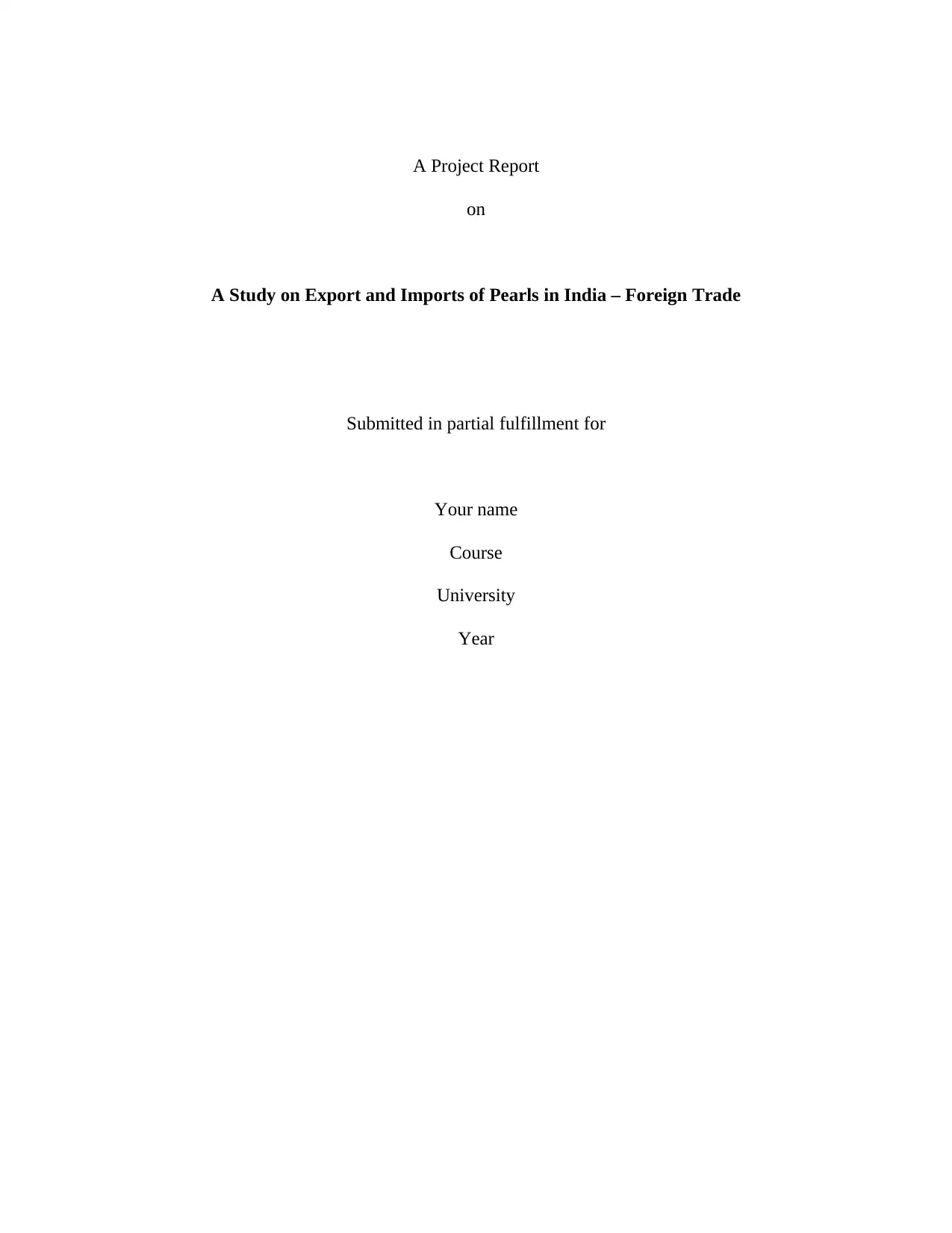
A Project Report
on
A Study on Export and Imports of Pearls in India – Foreign Trade
Submitted in partial fulfillment for
Your name
Course
University
Year
on
A Study on Export and Imports of Pearls in India – Foreign Trade
Submitted in partial fulfillment for
Your name
Course
University
Year
Paraphrase This Document
Need a fresh take? Get an instant paraphrase of this document with our AI Paraphraser
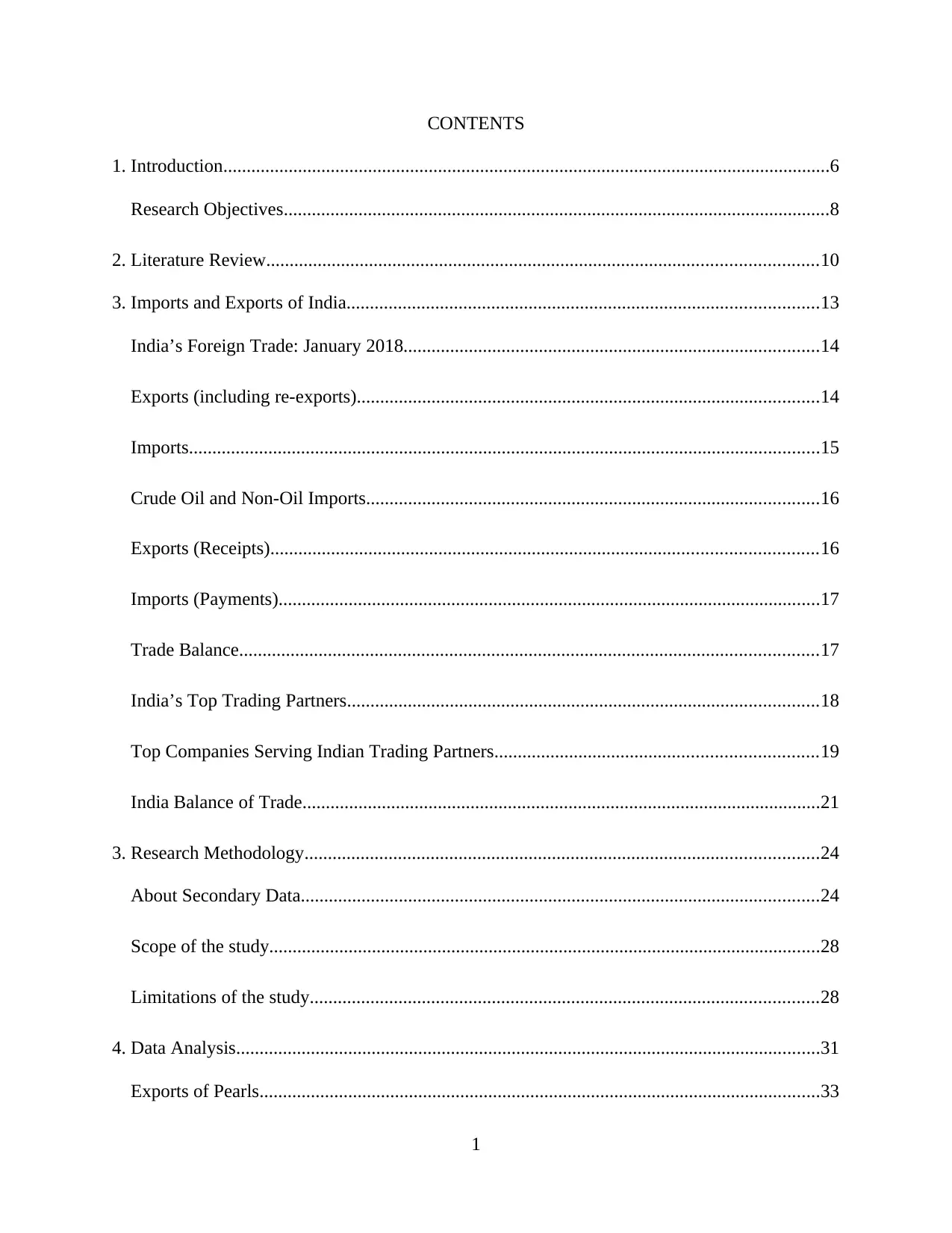
CONTENTS
1. Introduction..................................................................................................................................6
Research Objectives.....................................................................................................................8
2. Literature Review......................................................................................................................10
3. Imports and Exports of India.....................................................................................................13
India’s Foreign Trade: January 2018.........................................................................................14
Exports (including re-exports)...................................................................................................14
Imports.......................................................................................................................................15
Crude Oil and Non-Oil Imports.................................................................................................16
Exports (Receipts).....................................................................................................................16
Imports (Payments)....................................................................................................................17
Trade Balance............................................................................................................................17
India’s Top Trading Partners.....................................................................................................18
Top Companies Serving Indian Trading Partners.....................................................................19
India Balance of Trade...............................................................................................................21
3. Research Methodology..............................................................................................................24
About Secondary Data...............................................................................................................24
Scope of the study......................................................................................................................28
Limitations of the study.............................................................................................................28
4. Data Analysis.............................................................................................................................31
Exports of Pearls........................................................................................................................33
1
1. Introduction..................................................................................................................................6
Research Objectives.....................................................................................................................8
2. Literature Review......................................................................................................................10
3. Imports and Exports of India.....................................................................................................13
India’s Foreign Trade: January 2018.........................................................................................14
Exports (including re-exports)...................................................................................................14
Imports.......................................................................................................................................15
Crude Oil and Non-Oil Imports.................................................................................................16
Exports (Receipts).....................................................................................................................16
Imports (Payments)....................................................................................................................17
Trade Balance............................................................................................................................17
India’s Top Trading Partners.....................................................................................................18
Top Companies Serving Indian Trading Partners.....................................................................19
India Balance of Trade...............................................................................................................21
3. Research Methodology..............................................................................................................24
About Secondary Data...............................................................................................................24
Scope of the study......................................................................................................................28
Limitations of the study.............................................................................................................28
4. Data Analysis.............................................................................................................................31
Exports of Pearls........................................................................................................................33
1
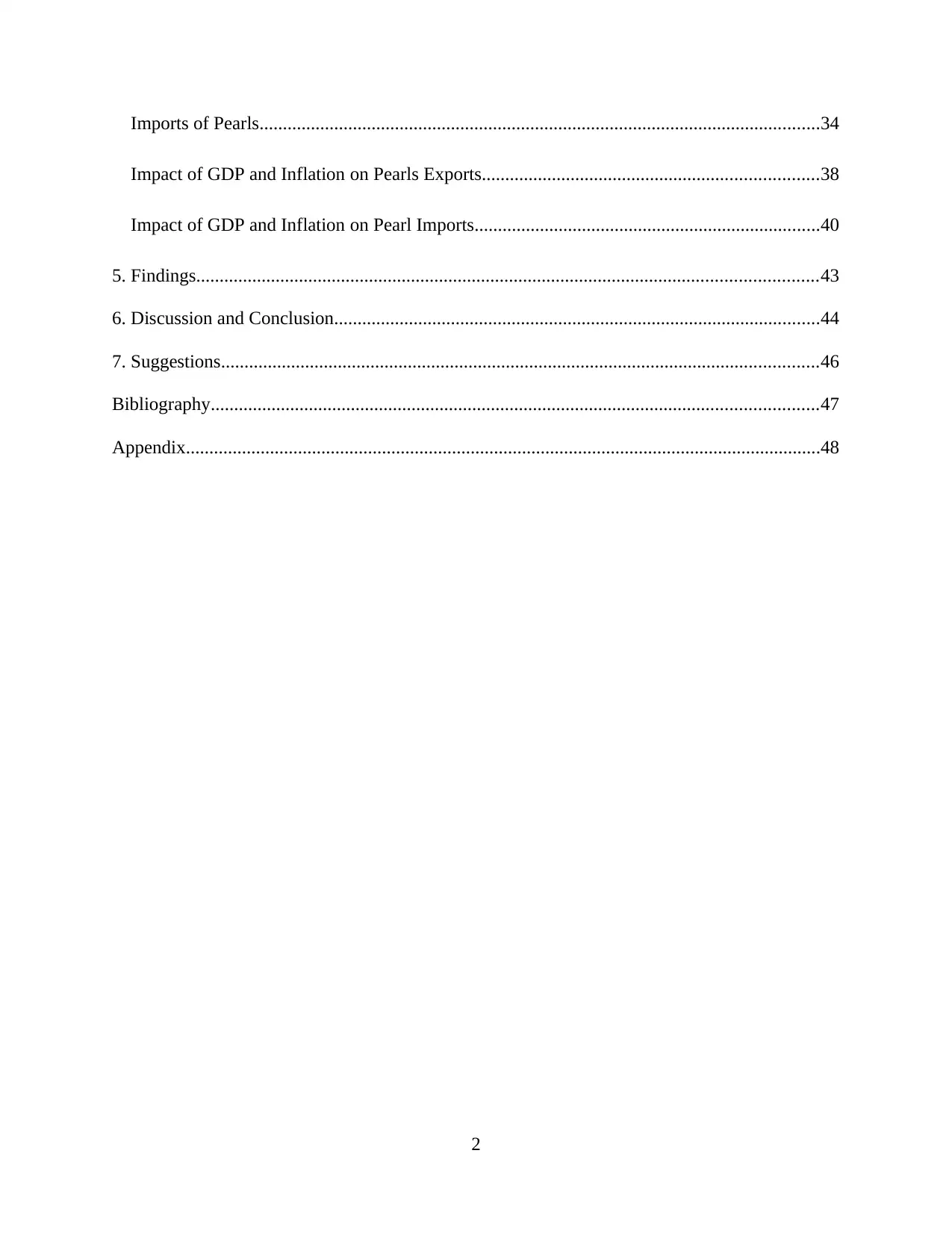
Imports of Pearls........................................................................................................................34
Impact of GDP and Inflation on Pearls Exports........................................................................38
Impact of GDP and Inflation on Pearl Imports..........................................................................40
5. Findings.....................................................................................................................................43
6. Discussion and Conclusion........................................................................................................44
7. Suggestions................................................................................................................................46
Bibliography..................................................................................................................................47
Appendix........................................................................................................................................48
2
Impact of GDP and Inflation on Pearls Exports........................................................................38
Impact of GDP and Inflation on Pearl Imports..........................................................................40
5. Findings.....................................................................................................................................43
6. Discussion and Conclusion........................................................................................................44
7. Suggestions................................................................................................................................46
Bibliography..................................................................................................................................47
Appendix........................................................................................................................................48
2
⊘ This is a preview!⊘
Do you want full access?
Subscribe today to unlock all pages.

Trusted by 1+ million students worldwide
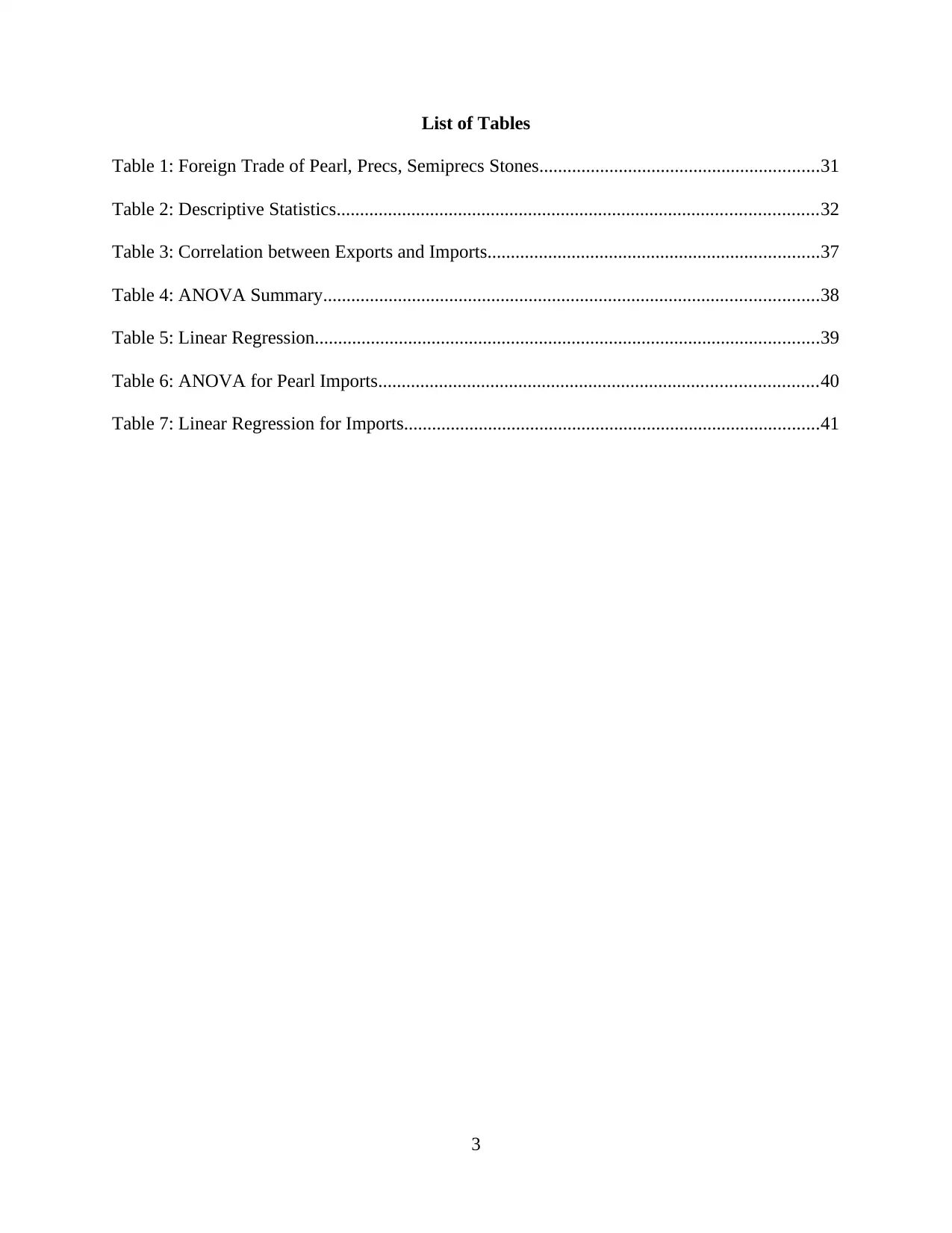
List of Tables
Table 1: Foreign Trade of Pearl, Precs, Semiprecs Stones............................................................31
Table 2: Descriptive Statistics.......................................................................................................32
Table 3: Correlation between Exports and Imports.......................................................................37
Table 4: ANOVA Summary..........................................................................................................38
Table 5: Linear Regression............................................................................................................39
Table 6: ANOVA for Pearl Imports..............................................................................................40
Table 7: Linear Regression for Imports.........................................................................................41
3
Table 1: Foreign Trade of Pearl, Precs, Semiprecs Stones............................................................31
Table 2: Descriptive Statistics.......................................................................................................32
Table 3: Correlation between Exports and Imports.......................................................................37
Table 4: ANOVA Summary..........................................................................................................38
Table 5: Linear Regression............................................................................................................39
Table 6: ANOVA for Pearl Imports..............................................................................................40
Table 7: Linear Regression for Imports.........................................................................................41
3
Paraphrase This Document
Need a fresh take? Get an instant paraphrase of this document with our AI Paraphraser
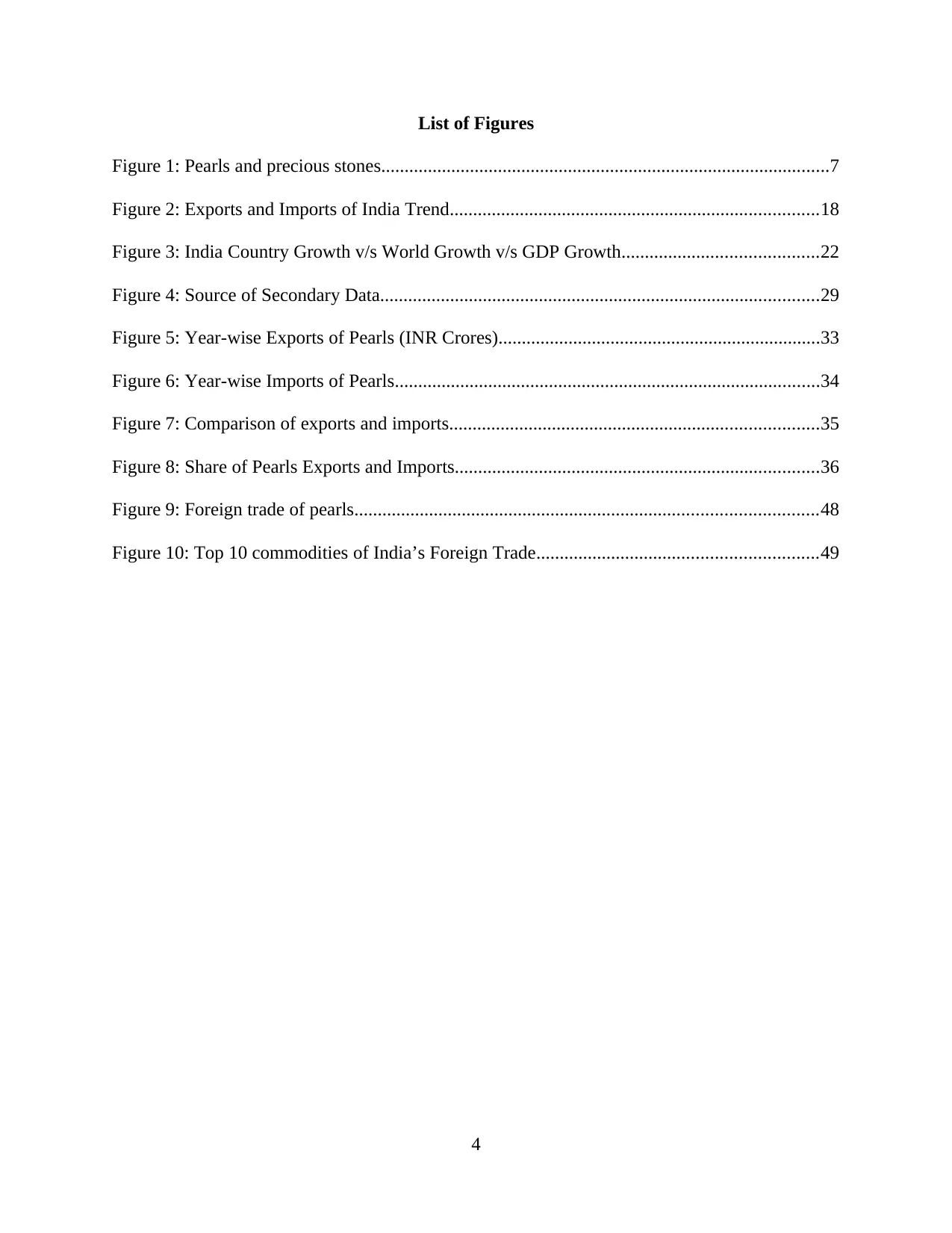
List of Figures
Figure 1: Pearls and precious stones................................................................................................7
Figure 2: Exports and Imports of India Trend...............................................................................18
Figure 3: India Country Growth v/s World Growth v/s GDP Growth..........................................22
Figure 4: Source of Secondary Data..............................................................................................29
Figure 5: Year-wise Exports of Pearls (INR Crores).....................................................................33
Figure 6: Year-wise Imports of Pearls...........................................................................................34
Figure 7: Comparison of exports and imports...............................................................................35
Figure 8: Share of Pearls Exports and Imports..............................................................................36
Figure 9: Foreign trade of pearls...................................................................................................48
Figure 10: Top 10 commodities of India’s Foreign Trade............................................................49
4
Figure 1: Pearls and precious stones................................................................................................7
Figure 2: Exports and Imports of India Trend...............................................................................18
Figure 3: India Country Growth v/s World Growth v/s GDP Growth..........................................22
Figure 4: Source of Secondary Data..............................................................................................29
Figure 5: Year-wise Exports of Pearls (INR Crores).....................................................................33
Figure 6: Year-wise Imports of Pearls...........................................................................................34
Figure 7: Comparison of exports and imports...............................................................................35
Figure 8: Share of Pearls Exports and Imports..............................................................................36
Figure 9: Foreign trade of pearls...................................................................................................48
Figure 10: Top 10 commodities of India’s Foreign Trade............................................................49
4
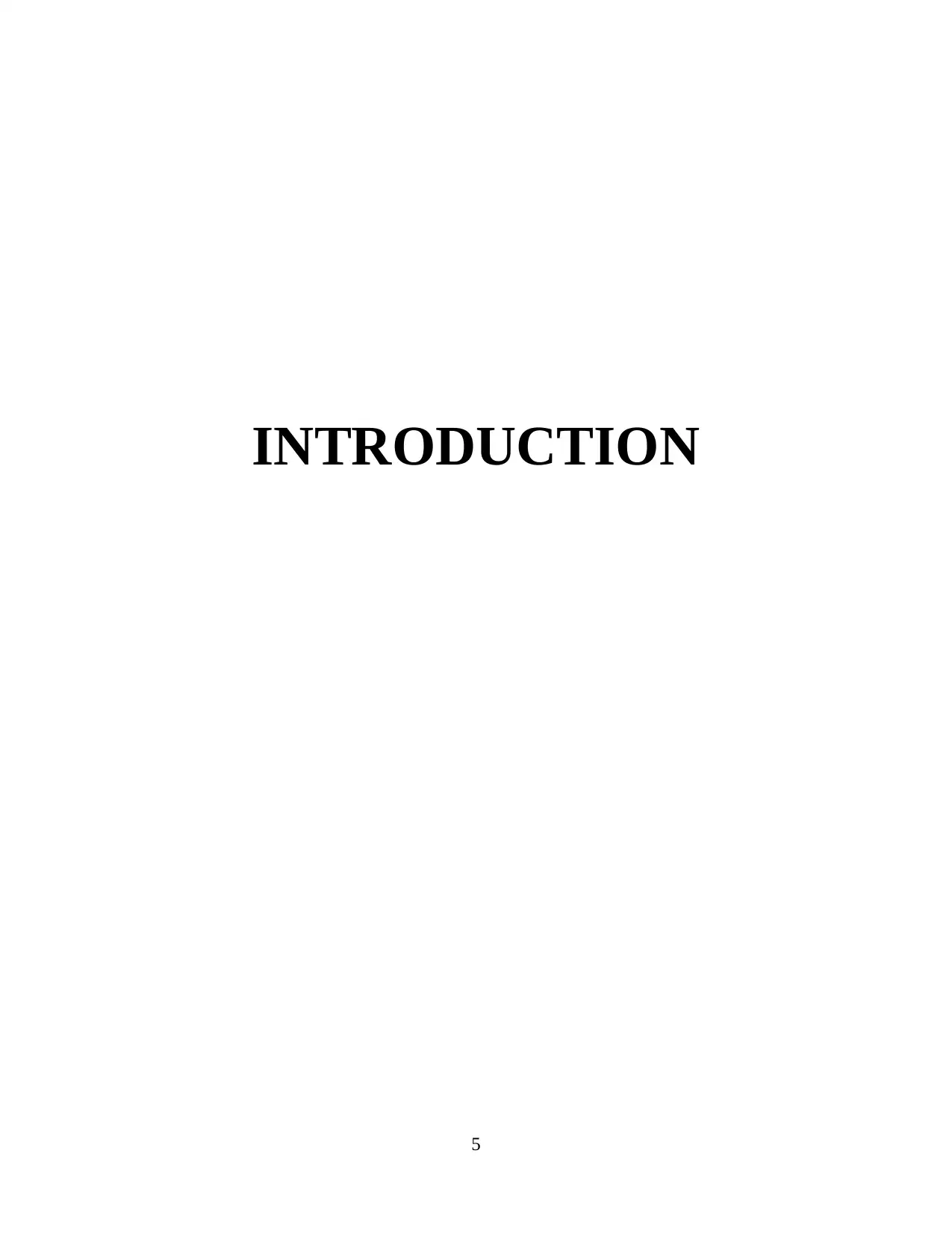
INTRODUCTION
5
5
⊘ This is a preview!⊘
Do you want full access?
Subscribe today to unlock all pages.

Trusted by 1+ million students worldwide
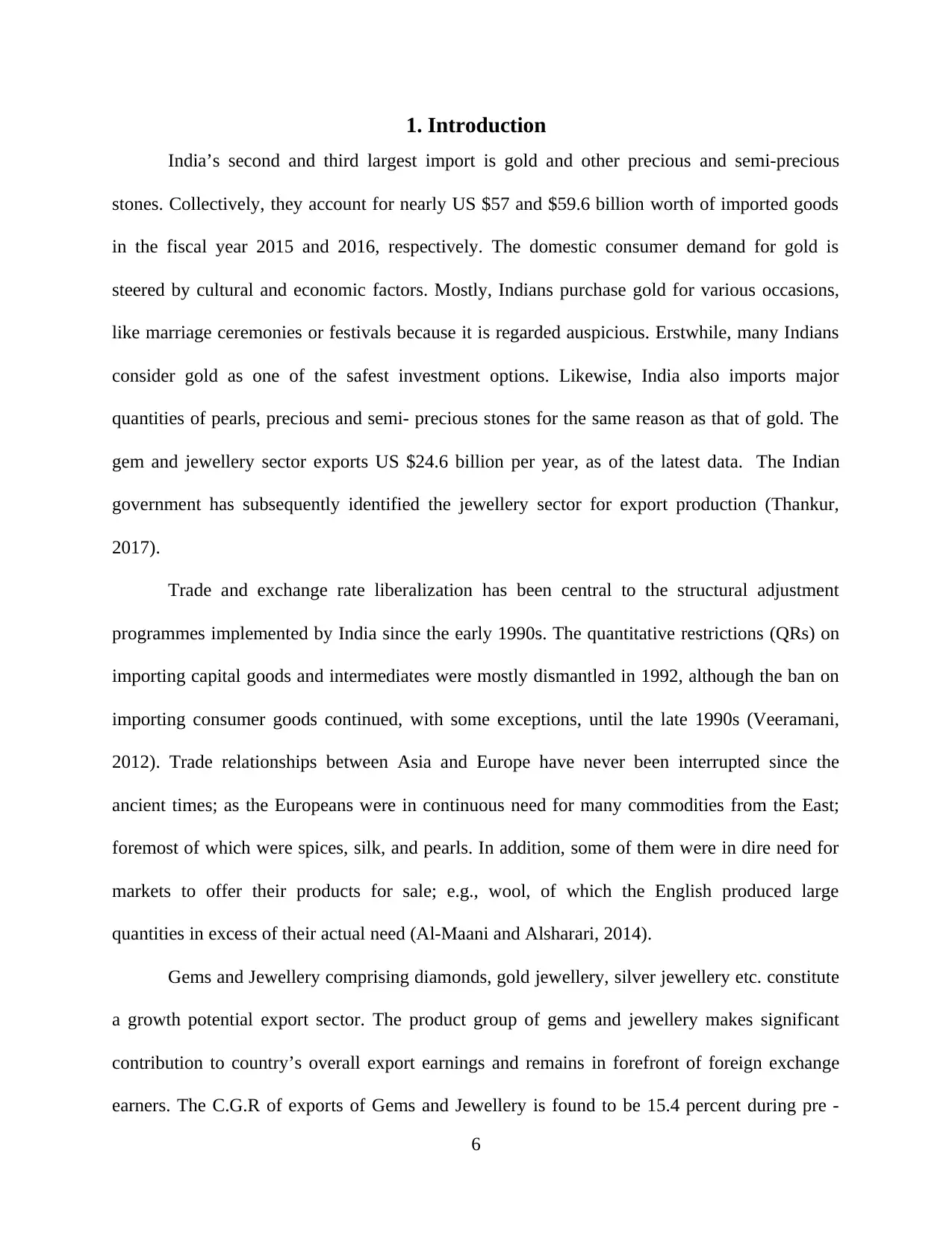
1. Introduction
India’s second and third largest import is gold and other precious and semi-precious
stones. Collectively, they account for nearly US $57 and $59.6 billion worth of imported goods
in the fiscal year 2015 and 2016, respectively. The domestic consumer demand for gold is
steered by cultural and economic factors. Mostly, Indians purchase gold for various occasions,
like marriage ceremonies or festivals because it is regarded auspicious. Erstwhile, many Indians
consider gold as one of the safest investment options. Likewise, India also imports major
quantities of pearls, precious and semi- precious stones for the same reason as that of gold. The
gem and jewellery sector exports US $24.6 billion per year, as of the latest data. The Indian
government has subsequently identified the jewellery sector for export production (Thankur,
2017).
Trade and exchange rate liberalization has been central to the structural adjustment
programmes implemented by India since the early 1990s. The quantitative restrictions (QRs) on
importing capital goods and intermediates were mostly dismantled in 1992, although the ban on
importing consumer goods continued, with some exceptions, until the late 1990s (Veeramani,
2012). Trade relationships between Asia and Europe have never been interrupted since the
ancient times; as the Europeans were in continuous need for many commodities from the East;
foremost of which were spices, silk, and pearls. In addition, some of them were in dire need for
markets to offer their products for sale; e.g., wool, of which the English produced large
quantities in excess of their actual need (Al-Maani and Alsharari, 2014).
Gems and Jewellery comprising diamonds, gold jewellery, silver jewellery etc. constitute
a growth potential export sector. The product group of gems and jewellery makes significant
contribution to country’s overall export earnings and remains in forefront of foreign exchange
earners. The C.G.R of exports of Gems and Jewellery is found to be 15.4 percent during pre -
6
India’s second and third largest import is gold and other precious and semi-precious
stones. Collectively, they account for nearly US $57 and $59.6 billion worth of imported goods
in the fiscal year 2015 and 2016, respectively. The domestic consumer demand for gold is
steered by cultural and economic factors. Mostly, Indians purchase gold for various occasions,
like marriage ceremonies or festivals because it is regarded auspicious. Erstwhile, many Indians
consider gold as one of the safest investment options. Likewise, India also imports major
quantities of pearls, precious and semi- precious stones for the same reason as that of gold. The
gem and jewellery sector exports US $24.6 billion per year, as of the latest data. The Indian
government has subsequently identified the jewellery sector for export production (Thankur,
2017).
Trade and exchange rate liberalization has been central to the structural adjustment
programmes implemented by India since the early 1990s. The quantitative restrictions (QRs) on
importing capital goods and intermediates were mostly dismantled in 1992, although the ban on
importing consumer goods continued, with some exceptions, until the late 1990s (Veeramani,
2012). Trade relationships between Asia and Europe have never been interrupted since the
ancient times; as the Europeans were in continuous need for many commodities from the East;
foremost of which were spices, silk, and pearls. In addition, some of them were in dire need for
markets to offer their products for sale; e.g., wool, of which the English produced large
quantities in excess of their actual need (Al-Maani and Alsharari, 2014).
Gems and Jewellery comprising diamonds, gold jewellery, silver jewellery etc. constitute
a growth potential export sector. The product group of gems and jewellery makes significant
contribution to country’s overall export earnings and remains in forefront of foreign exchange
earners. The C.G.R of exports of Gems and Jewellery is found to be 15.4 percent during pre -
6
Paraphrase This Document
Need a fresh take? Get an instant paraphrase of this document with our AI Paraphraser
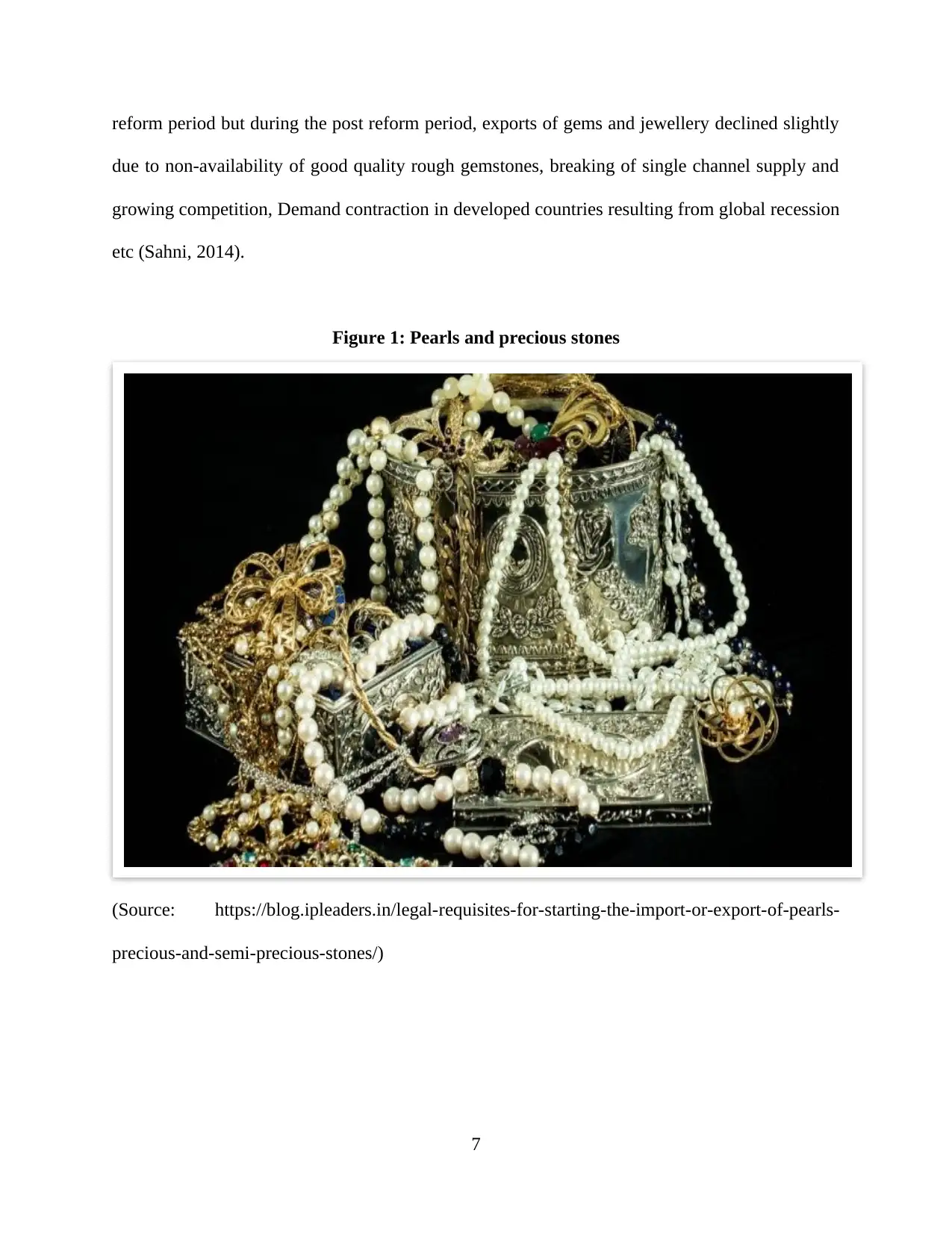
reform period but during the post reform period, exports of gems and jewellery declined slightly
due to non-availability of good quality rough gemstones, breaking of single channel supply and
growing competition, Demand contraction in developed countries resulting from global recession
etc (Sahni, 2014).
Figure 1: Pearls and precious stones
(Source: https://blog.ipleaders.in/legal-requisites-for-starting-the-import-or-export-of-pearls-
precious-and-semi-precious-stones/)
7
due to non-availability of good quality rough gemstones, breaking of single channel supply and
growing competition, Demand contraction in developed countries resulting from global recession
etc (Sahni, 2014).
Figure 1: Pearls and precious stones
(Source: https://blog.ipleaders.in/legal-requisites-for-starting-the-import-or-export-of-pearls-
precious-and-semi-precious-stones/)
7
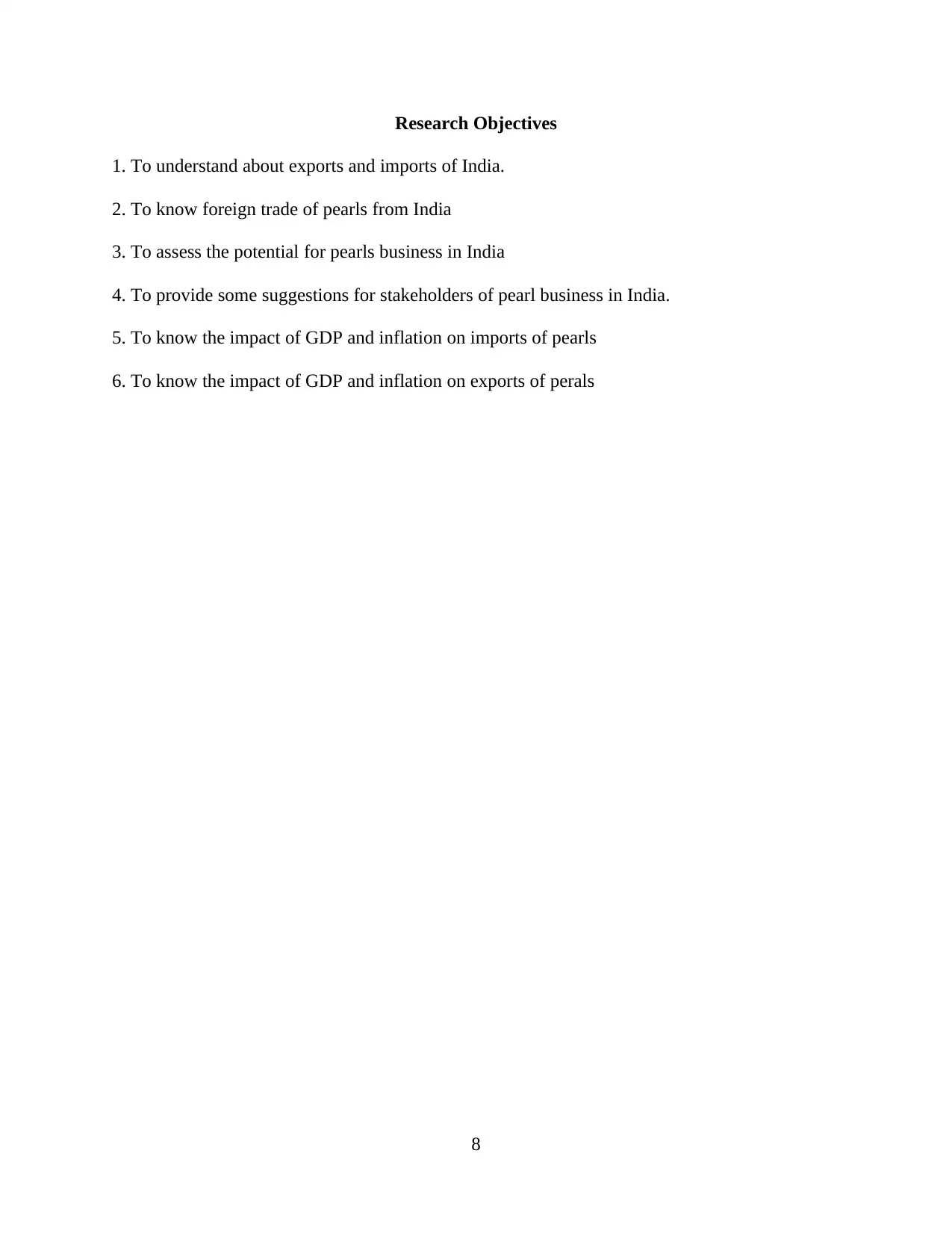
Research Objectives
1. To understand about exports and imports of India.
2. To know foreign trade of pearls from India
3. To assess the potential for pearls business in India
4. To provide some suggestions for stakeholders of pearl business in India.
5. To know the impact of GDP and inflation on imports of pearls
6. To know the impact of GDP and inflation on exports of perals
8
1. To understand about exports and imports of India.
2. To know foreign trade of pearls from India
3. To assess the potential for pearls business in India
4. To provide some suggestions for stakeholders of pearl business in India.
5. To know the impact of GDP and inflation on imports of pearls
6. To know the impact of GDP and inflation on exports of perals
8
⊘ This is a preview!⊘
Do you want full access?
Subscribe today to unlock all pages.

Trusted by 1+ million students worldwide
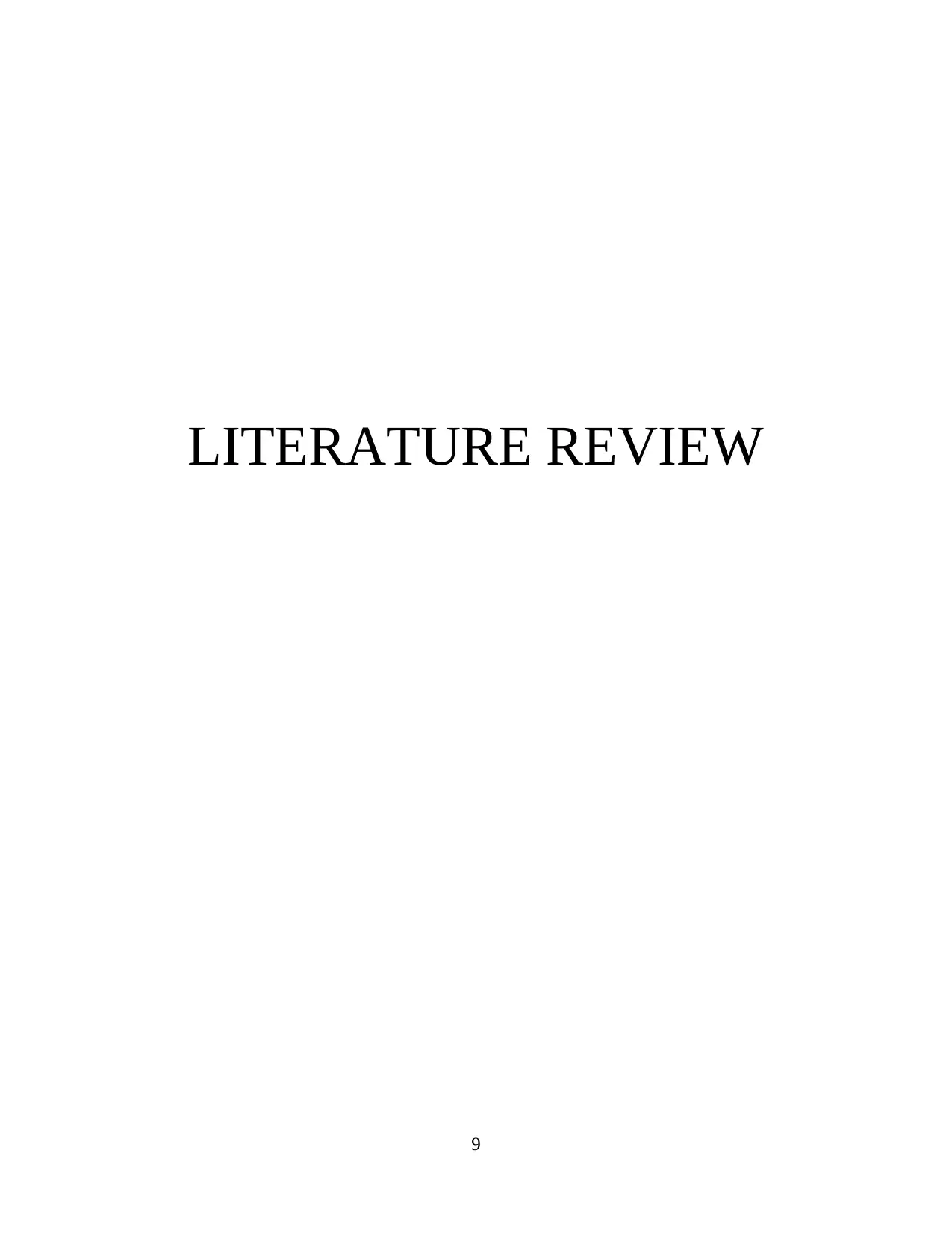
LITERATURE REVIEW
9
9
Paraphrase This Document
Need a fresh take? Get an instant paraphrase of this document with our AI Paraphraser
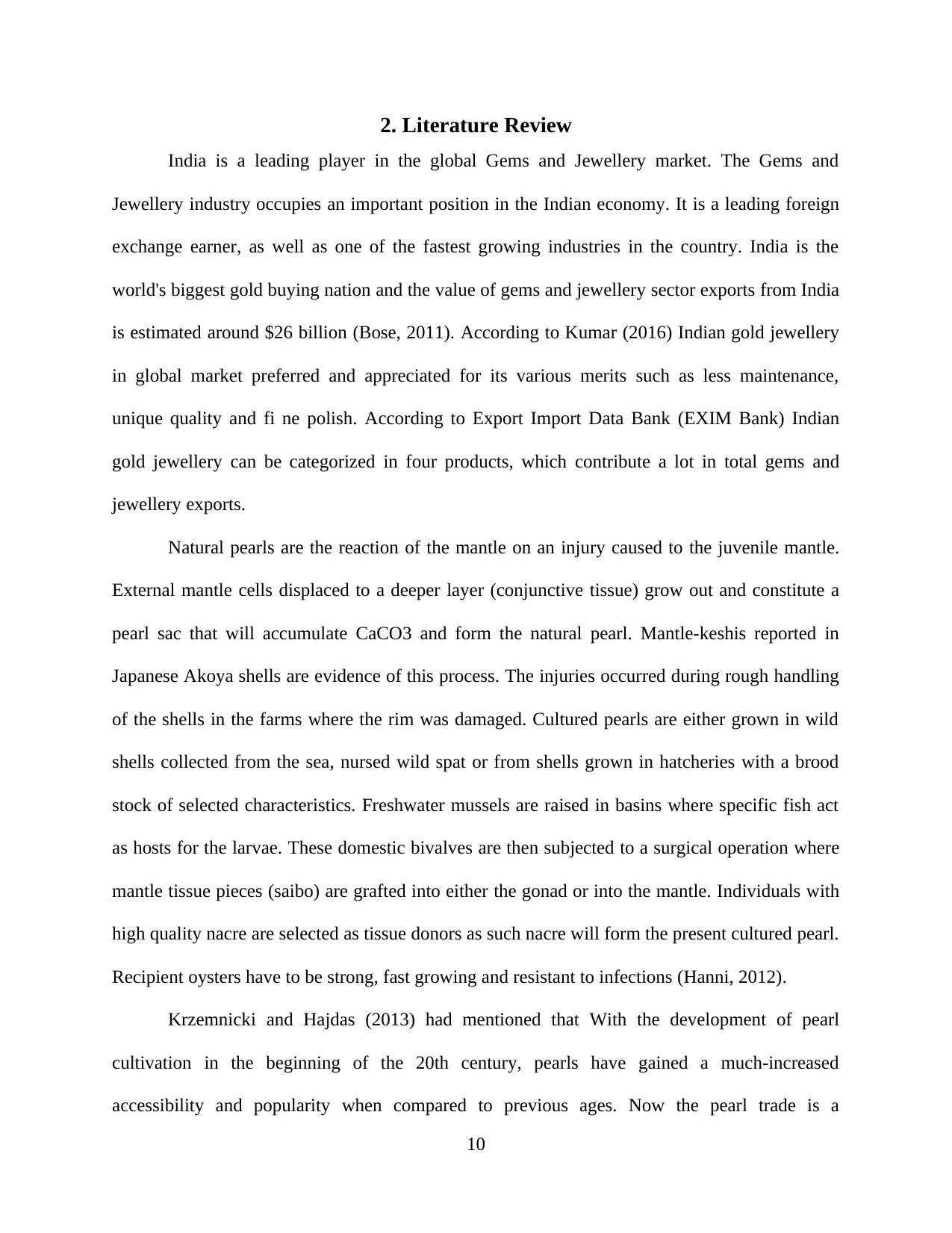
2. Literature Review
India is a leading player in the global Gems and Jewellery market. The Gems and
Jewellery industry occupies an important position in the Indian economy. It is a leading foreign
exchange earner, as well as one of the fastest growing industries in the country. India is the
world's biggest gold buying nation and the value of gems and jewellery sector exports from India
is estimated around $26 billion (Bose, 2011). According to Kumar (2016) Indian gold jewellery
in global market preferred and appreciated for its various merits such as less maintenance,
unique quality and fi ne polish. According to Export Import Data Bank (EXIM Bank) Indian
gold jewellery can be categorized in four products, which contribute a lot in total gems and
jewellery exports.
Natural pearls are the reaction of the mantle on an injury caused to the juvenile mantle.
External mantle cells displaced to a deeper layer (conjunctive tissue) grow out and constitute a
pearl sac that will accumulate CaCO3 and form the natural pearl. Mantle-keshis reported in
Japanese Akoya shells are evidence of this process. The injuries occurred during rough handling
of the shells in the farms where the rim was damaged. Cultured pearls are either grown in wild
shells collected from the sea, nursed wild spat or from shells grown in hatcheries with a brood
stock of selected characteristics. Freshwater mussels are raised in basins where specific fish act
as hosts for the larvae. These domestic bivalves are then subjected to a surgical operation where
mantle tissue pieces (saibo) are grafted into either the gonad or into the mantle. Individuals with
high quality nacre are selected as tissue donors as such nacre will form the present cultured pearl.
Recipient oysters have to be strong, fast growing and resistant to infections (Hanni, 2012).
Krzemnicki and Hajdas (2013) had mentioned that With the development of pearl
cultivation in the beginning of the 20th century, pearls have gained a much-increased
accessibility and popularity when compared to previous ages. Now the pearl trade is a
10
India is a leading player in the global Gems and Jewellery market. The Gems and
Jewellery industry occupies an important position in the Indian economy. It is a leading foreign
exchange earner, as well as one of the fastest growing industries in the country. India is the
world's biggest gold buying nation and the value of gems and jewellery sector exports from India
is estimated around $26 billion (Bose, 2011). According to Kumar (2016) Indian gold jewellery
in global market preferred and appreciated for its various merits such as less maintenance,
unique quality and fi ne polish. According to Export Import Data Bank (EXIM Bank) Indian
gold jewellery can be categorized in four products, which contribute a lot in total gems and
jewellery exports.
Natural pearls are the reaction of the mantle on an injury caused to the juvenile mantle.
External mantle cells displaced to a deeper layer (conjunctive tissue) grow out and constitute a
pearl sac that will accumulate CaCO3 and form the natural pearl. Mantle-keshis reported in
Japanese Akoya shells are evidence of this process. The injuries occurred during rough handling
of the shells in the farms where the rim was damaged. Cultured pearls are either grown in wild
shells collected from the sea, nursed wild spat or from shells grown in hatcheries with a brood
stock of selected characteristics. Freshwater mussels are raised in basins where specific fish act
as hosts for the larvae. These domestic bivalves are then subjected to a surgical operation where
mantle tissue pieces (saibo) are grafted into either the gonad or into the mantle. Individuals with
high quality nacre are selected as tissue donors as such nacre will form the present cultured pearl.
Recipient oysters have to be strong, fast growing and resistant to infections (Hanni, 2012).
Krzemnicki and Hajdas (2013) had mentioned that With the development of pearl
cultivation in the beginning of the 20th century, pearls have gained a much-increased
accessibility and popularity when compared to previous ages. Now the pearl trade is a
10
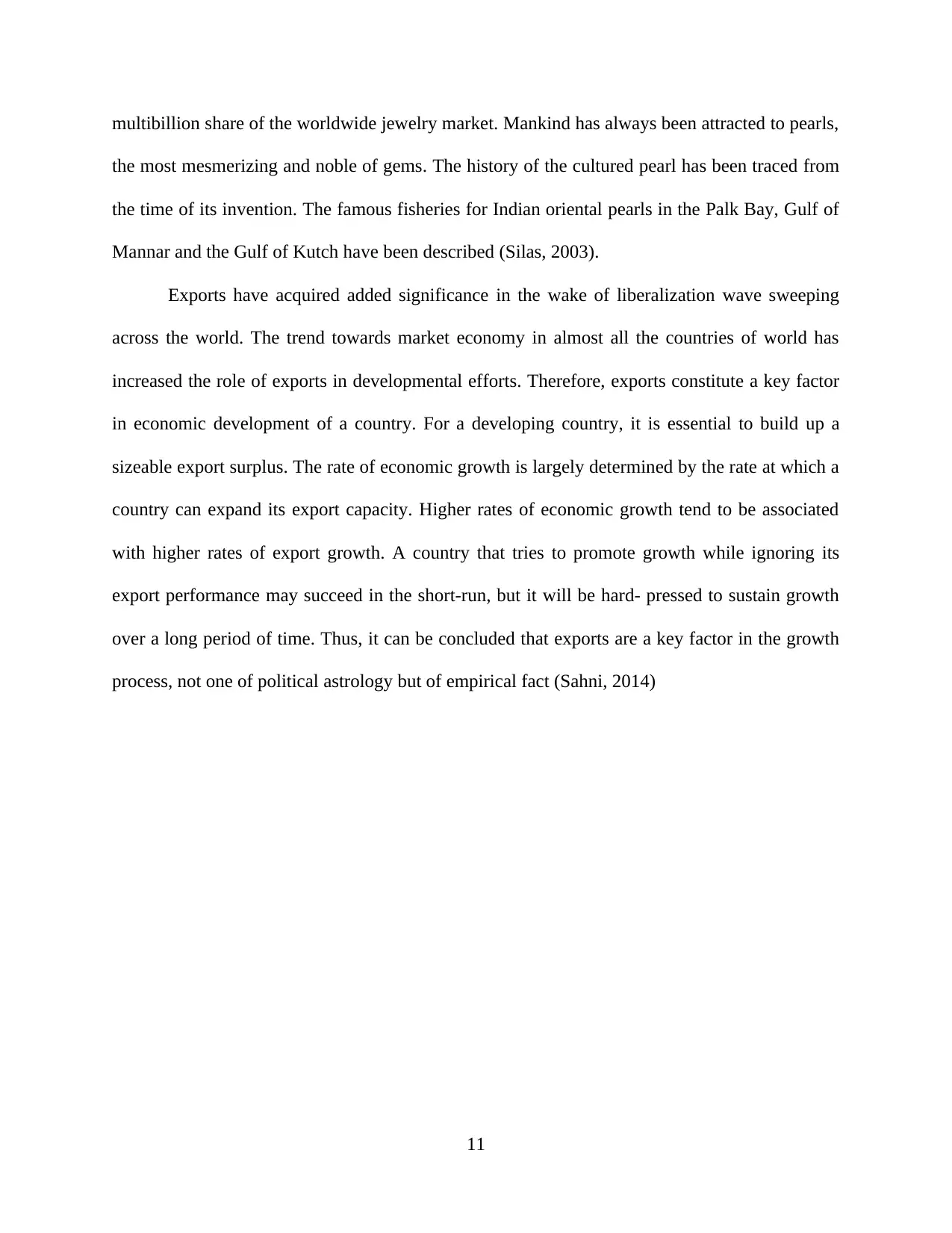
multibillion share of the worldwide jewelry market. Mankind has always been attracted to pearls,
the most mesmerizing and noble of gems. The history of the cultured pearl has been traced from
the time of its invention. The famous fisheries for Indian oriental pearls in the Palk Bay, Gulf of
Mannar and the Gulf of Kutch have been described (Silas, 2003).
Exports have acquired added significance in the wake of liberalization wave sweeping
across the world. The trend towards market economy in almost all the countries of world has
increased the role of exports in developmental efforts. Therefore, exports constitute a key factor
in economic development of a country. For a developing country, it is essential to build up a
sizeable export surplus. The rate of economic growth is largely determined by the rate at which a
country can expand its export capacity. Higher rates of economic growth tend to be associated
with higher rates of export growth. A country that tries to promote growth while ignoring its
export performance may succeed in the short-run, but it will be hard- pressed to sustain growth
over a long period of time. Thus, it can be concluded that exports are a key factor in the growth
process, not one of political astrology but of empirical fact (Sahni, 2014)
11
the most mesmerizing and noble of gems. The history of the cultured pearl has been traced from
the time of its invention. The famous fisheries for Indian oriental pearls in the Palk Bay, Gulf of
Mannar and the Gulf of Kutch have been described (Silas, 2003).
Exports have acquired added significance in the wake of liberalization wave sweeping
across the world. The trend towards market economy in almost all the countries of world has
increased the role of exports in developmental efforts. Therefore, exports constitute a key factor
in economic development of a country. For a developing country, it is essential to build up a
sizeable export surplus. The rate of economic growth is largely determined by the rate at which a
country can expand its export capacity. Higher rates of economic growth tend to be associated
with higher rates of export growth. A country that tries to promote growth while ignoring its
export performance may succeed in the short-run, but it will be hard- pressed to sustain growth
over a long period of time. Thus, it can be concluded that exports are a key factor in the growth
process, not one of political astrology but of empirical fact (Sahni, 2014)
11
⊘ This is a preview!⊘
Do you want full access?
Subscribe today to unlock all pages.

Trusted by 1+ million students worldwide
1 out of 50
Your All-in-One AI-Powered Toolkit for Academic Success.
+13062052269
info@desklib.com
Available 24*7 on WhatsApp / Email
![[object Object]](/_next/static/media/star-bottom.7253800d.svg)
Unlock your academic potential
Copyright © 2020–2025 A2Z Services. All Rights Reserved. Developed and managed by ZUCOL.
